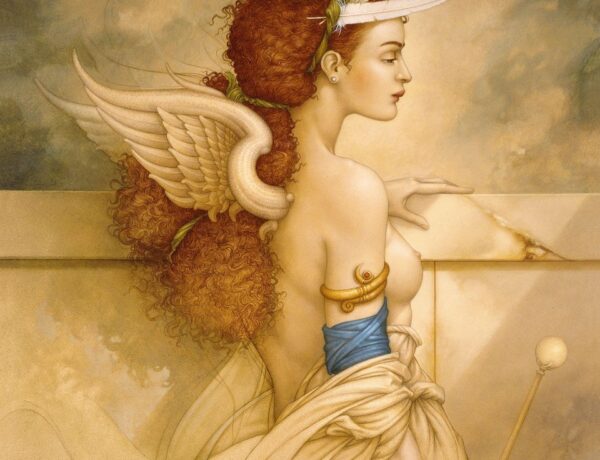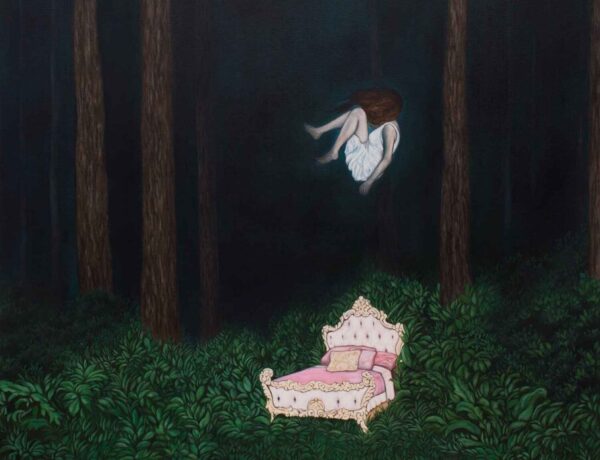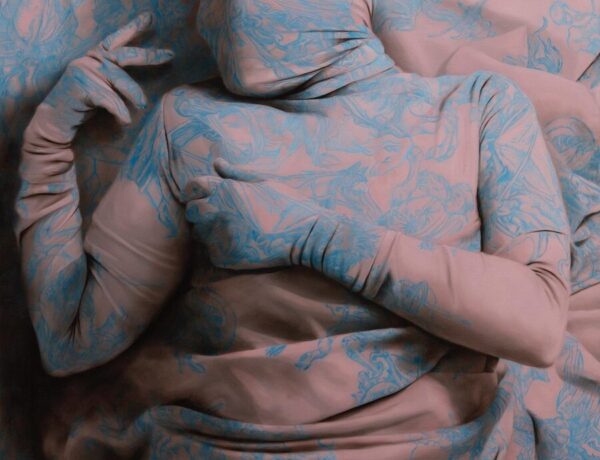Step inside, make yourself comfortable and get ready to envelop yourself inside of a new, unknown reality. This reality is not your own and it never will be, for each of us have our own realities that other’s can never truly comprehend. Welcome to the subjective reality of Pavel Guliaev, a maximalist, Hieronymus Bosch-like world where human stories and symbolism reign supreme enticing the viewer to delve deeper in order to obtain a glimpse of his reality. While we may never truly be able to understand or appreciate his reality, we can take a piece of his work with us to help reshape our own realities.
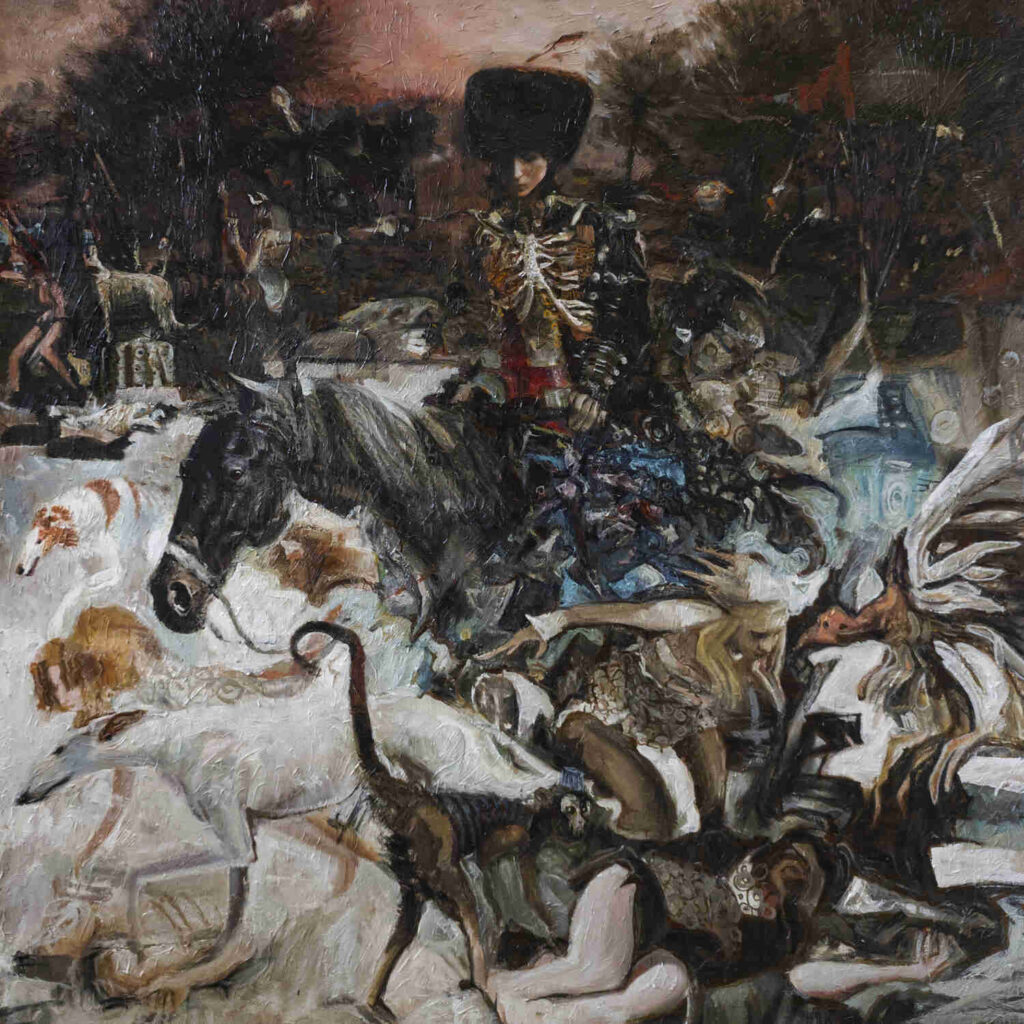
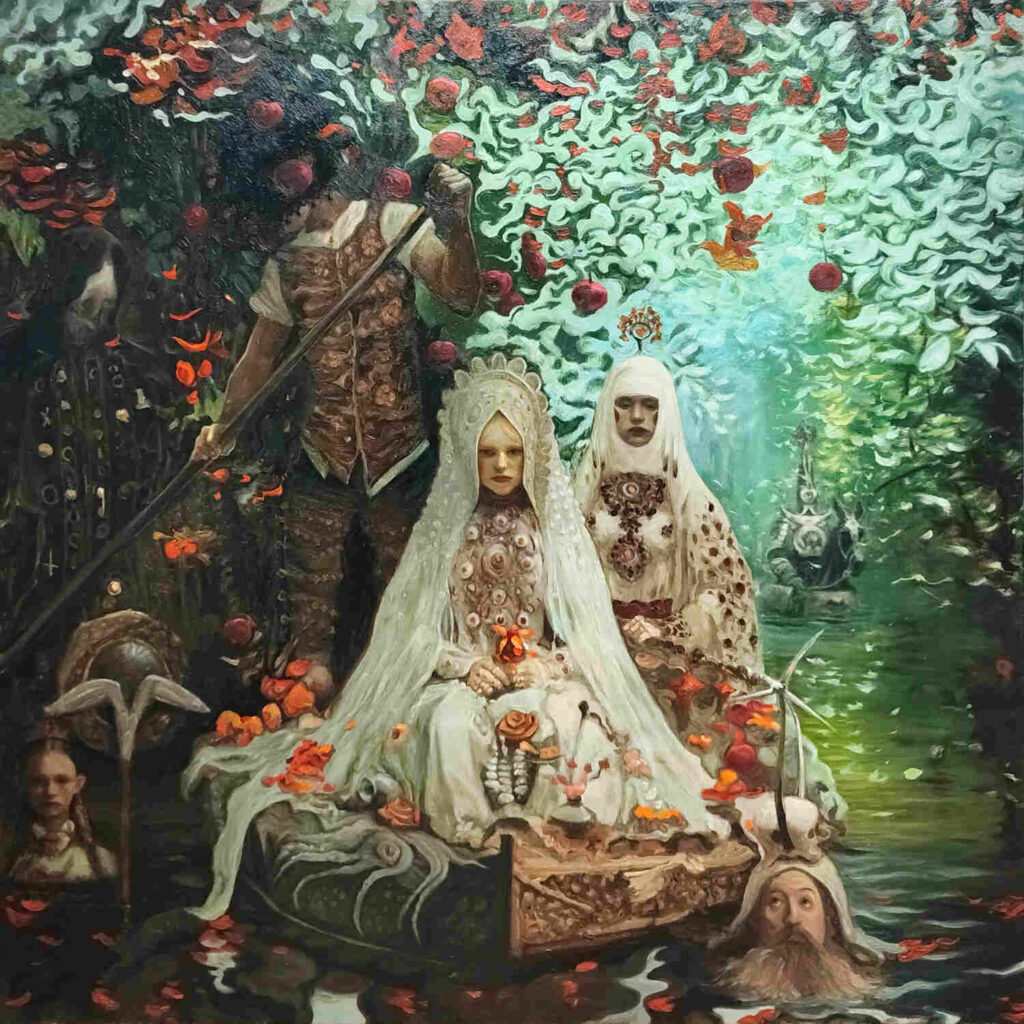
Born in the USSR, Pavel Guliaev is a fine artist who specialises in both symbolism and realism. Using oils, Pavel unites these two genres creating what he likes to call “subjective realism” and “subjective symbolism”. As a child, Pavel was always drawing and his interest in art would be further encouraged by his family who all loved expressing themselves creatively. Pavel would go on to study and graduate from Moscow Academy of Printing where he would earn himself a double major in Fine Art and Graphic Design.
Pavel has been a practicing artist for over 20 years in which he has spent parts of his career illustrating in various publishing houses, teaching graphic design and continuing his pursuit of exploring his subjective reality through oils.
The viewer is a co-author of each of my paintings.
Interview with Pavel Guliaev
You describe your work as subjective realism/subjective symbolism and propose how reality is processed subconsciously therefore becoming subjective. I’m eager to hear more about this idea and your thoughts on it! Could it be argued that there is no reality at all? Do we all have our own separate realities?
Yes, of course, each person has their own reality. I’d even go as far as to say that each person’s reality changes depending on their mood, exposure to the realities of other’s and various other circumstances. It’s very likely that there’s an objective reality separate from each person. But for me, this is something speculative, because I still live in my reality with its routine, miracles, strange coincidences, unexpected gifts, grief, joy, boredom and interests.
Of course, the existence of the world around me is objective, but what really happens to me, what I feel, what I imagine – all this is undoubtedly my subjective reality. Since I can’t separate the world around me from myself, then the world becomes subjectively my world. We live in a world where objectivity, idealism and subjectivity all coexist.


I’d love to hear about the types of symbolism you like to incorporate into your work.
I use various types of symbols in my paintings including historical symbols (biblical and mythological) and signs such as ideograms and geometric symbols. However, I most often use intentional symbols – symbols that I create myself, which gain meaning only in conjunction with my experience and my reflection. Each viewer can give their own interpretations to any of the symbols featured in my work. In each of my paintings the viewer can only see what they see and a little of what I wanted to show. Therefore, the viewer is a co-author of each of my paintings.
Every painting you create has a story to tell. How do you approach brining a new piece to life?
I do a lot of preparatory work for each painting. I spend more time on sketches and searching for ideas than on the actual painting process. I can be inspired by anything: a painting, photograph, film, book, shadow from a tree, cracks in the asphalt, anything that allows my imagination to work. And I really love experimenting with ideas, styles, and techniques.

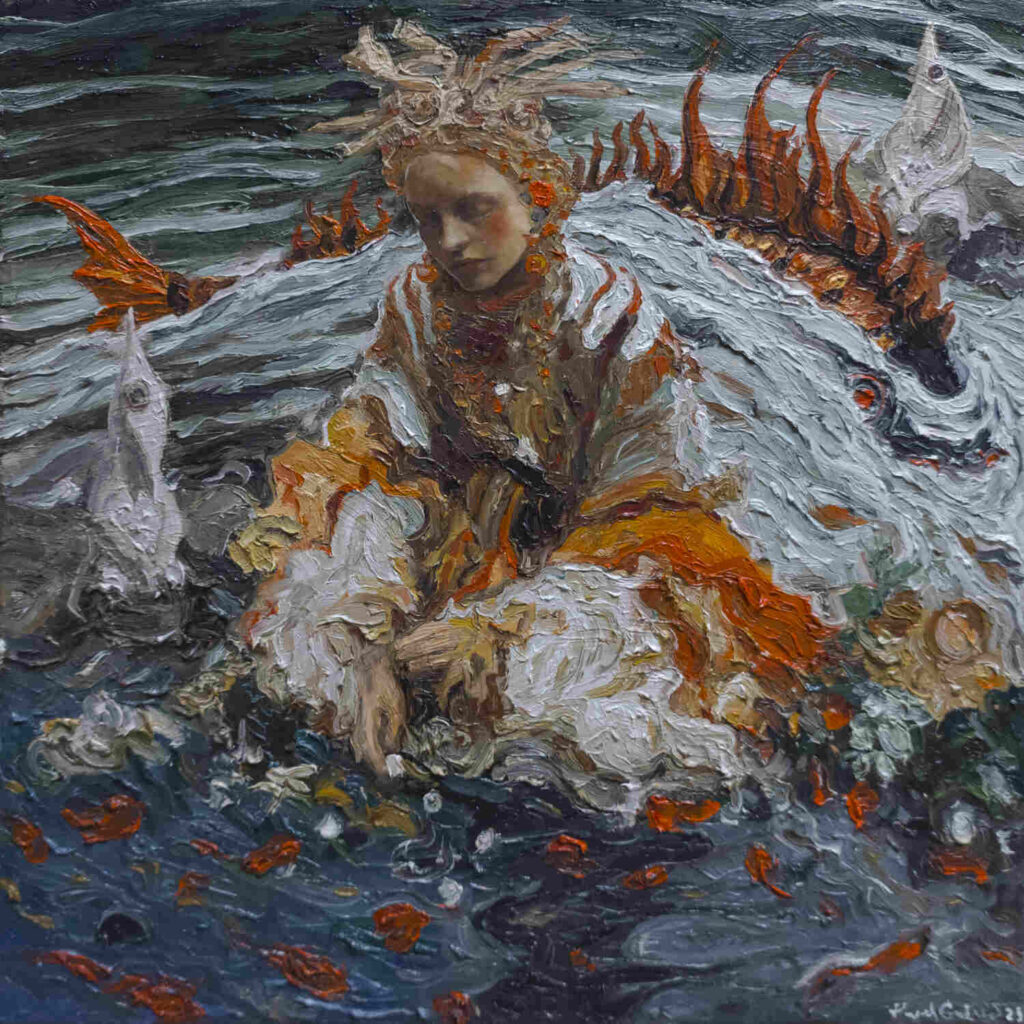
Who/what inspires you?
All life around me, people, nature, politics, history, myths, religion, folklore, everything that can take over my thoughts and feelings at any moment is the source of my inspiration.
How do you think your art style and practice has evolved over the past 20+ years?
In recent years, I have been working in oils painted on canvas. This technique is the most convenient for me as I can convey exactly what I want to and not depend on the random effects of this or that technique. This is a classic technique used to create most of the world’s greatest classical masterpieces. Oil painting has delighted me since I was a child. Now, I don’t just do oil painting, but also impasto painting which is painting with a thick layer of paint that’s applied with a palette knife or brush.
This technique doesn’t allow you to create many small, precise details like you’d see in photorealism, but it adds expression and tactile sensations to the painting. I still make some large multi-figure compositions in the classical manner, since it allows me to depict small details more accurately and does not distract with the texture of the paint layer.
The existence of the world around me is objective, but what really happens to me, what I feel, what I imagine – all this is undoubtedly my subjective reality.
Many of your paintings remind me of Hieronymus Bosch and his maximalist style as there is so much rich detail to admire tucked away in every corner. What do you make of this interpretation of your work?
Yes, you are absolutely right. Since childhood, I have loved the paintings of Hieronymus Bosch and Pieter Bruegel. Both of these artists had a huge influence on me. The world of their paintings fascinated me like a rabbit to a boa constrictor. I could spend hours looking at collections of their work and live in their paintings. In the same way, I want the viewer to be able to live in my paintings, so that every detail draws them deeper and deeper.
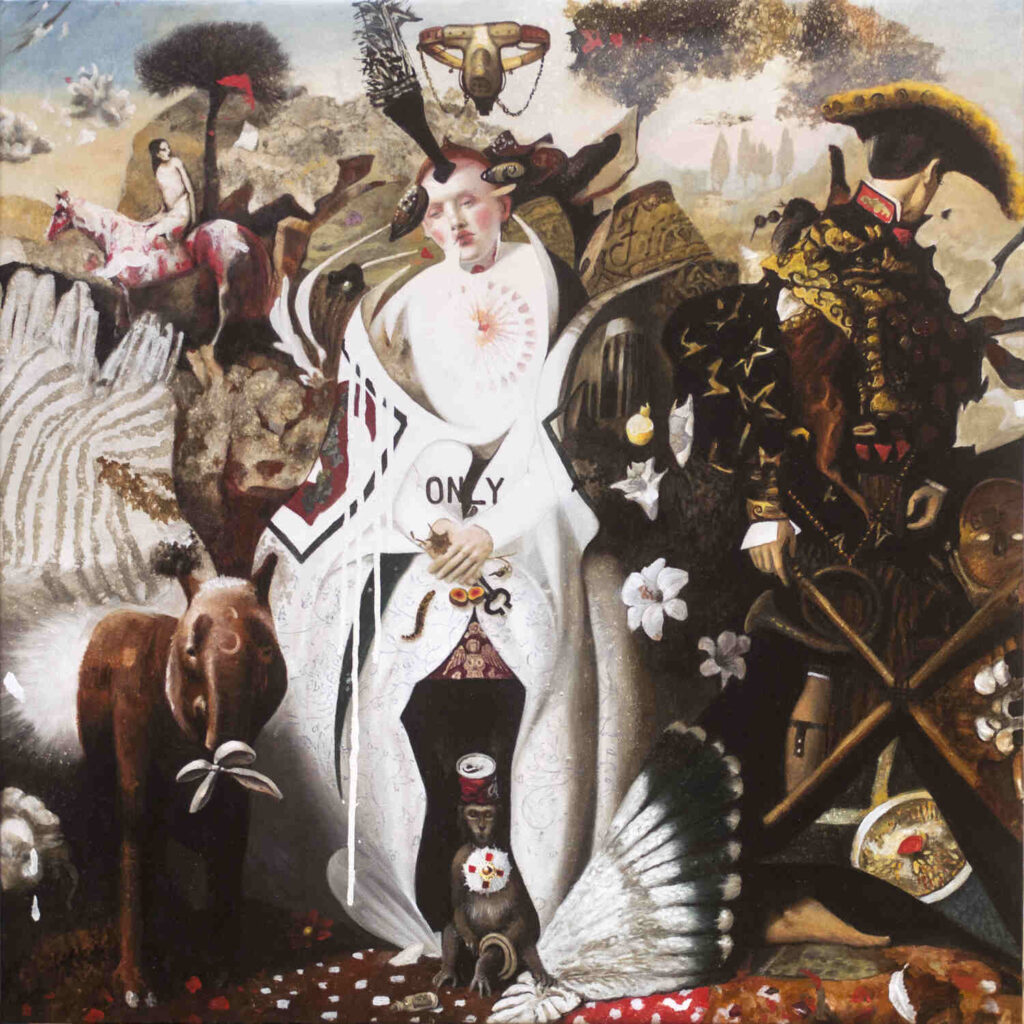
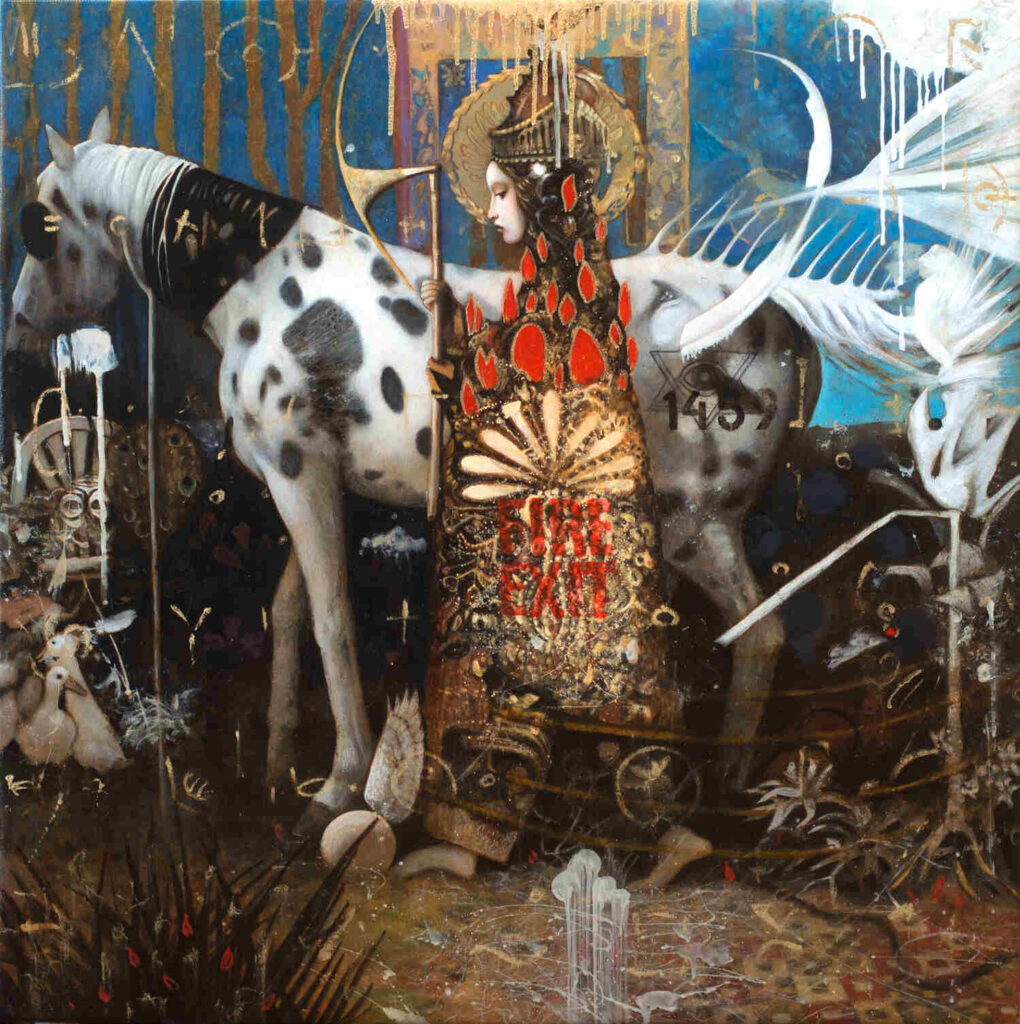
I am fascinated by your painting ‘Only You’ and the idea that people put on their own chastity belts only to break and reapply them. Can you tell me a bit more about this piece and the inspiration behind it?
This is, in fact, a simple story of love and jealousy, freedom and lack of freedom, the husband’s sense of ownership and the woman’s desire not to be someone else’s property. This is an old story, starting with Boccaccio’s Decameron, Shakespeare’s Othello, the story of Henry the Eighth and his six wives, and ending with the modern struggle of women fighting for their rights.
Do you draw from your own life experiences to help conceptualize your work?
Each of my paintings is the result of my life experience, my imagination as well as my technical professional experience. Many of the symbols that I use in the compositions of my works are symbols that only I understand. All my ideas arise only from my own life experience or from my subconscious, which is again based on my experiences, my understanding of the world.
Do you have a painting which you are particularly proud of? If so, which one and why?
I put a piece of my soul into every painting I make and that’s why I love them all. Some may have been less successful than others, but they are all my children, all different and all loved…
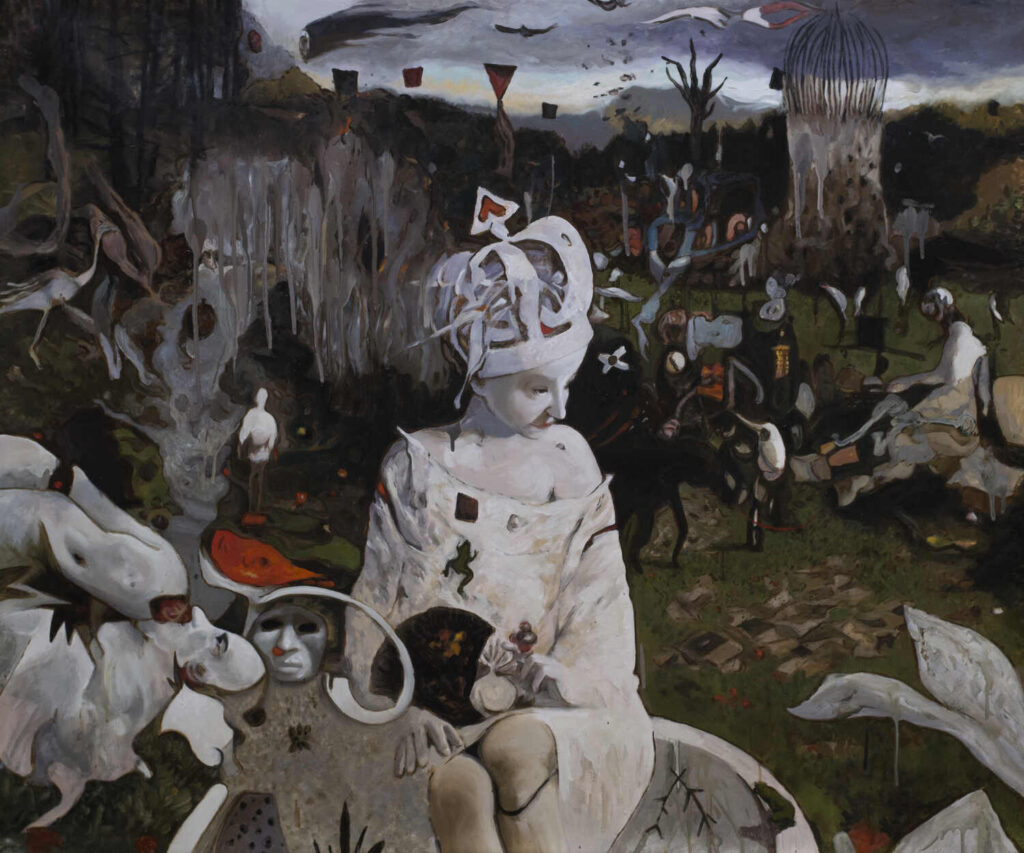
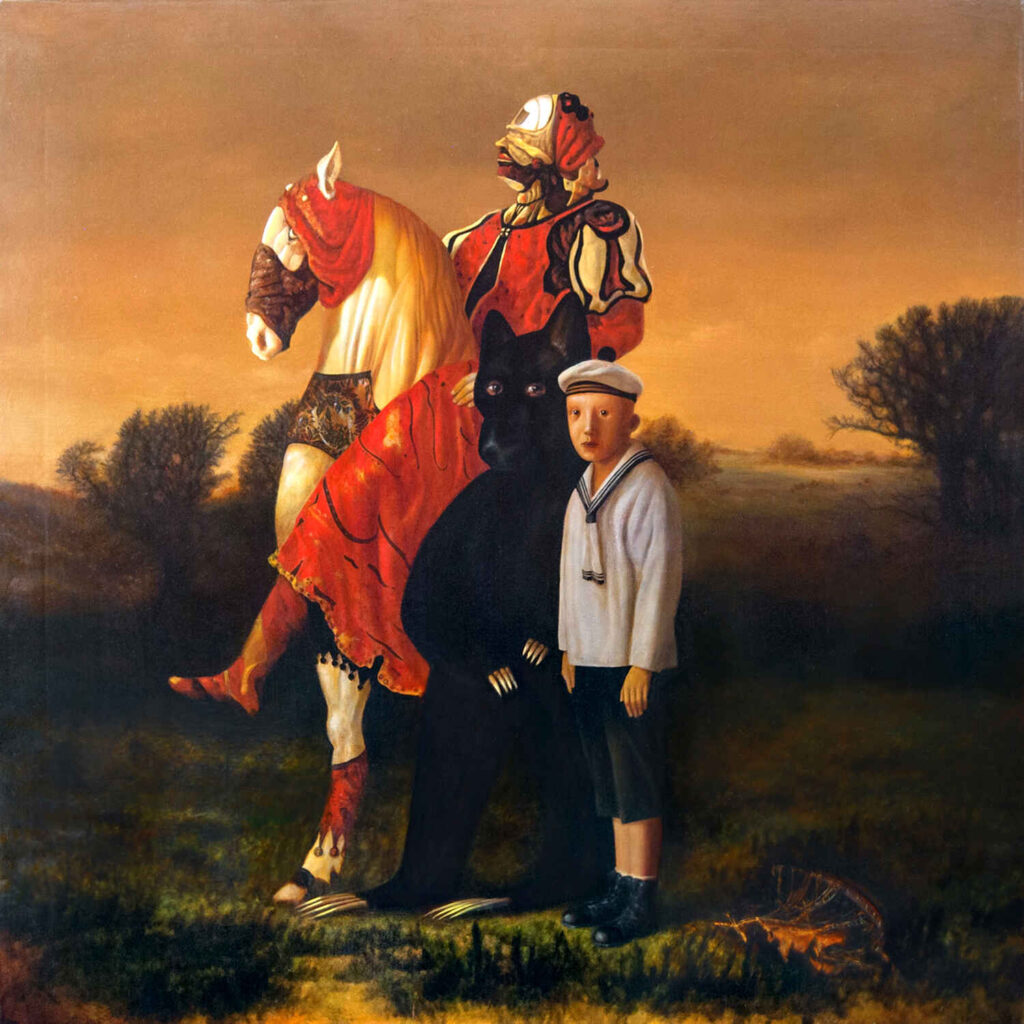
When you aren’t painting, what do you get up to in your free time?
Unfortunately, being an artist does not allow you to have a lot of free time. I have no working hours and non-working hours, no working days or weekends. I always work. I dream of learning to play the piano and make sculptures and ceramics. I like to listen to classical music and watch movies. I don’t have time to read because it takes too much time (I can’t tear myself away from a book until I’ve read it all), sometimes I travel with my family. In the mornings I like to walk in the park.
Looking forward, do you have any exciting plans/projects coming up that you can tell our readers a bit about?
I have a lot of plans. I have fifteen new sketches for my paintings. There are dozens of ideas. I want to make a series of paintings based on biblical scenes. A series of paintings on the theme of human games and much more. I want to do a series of graphic works. Maybe I will be able to organize a personal exhibition this year. I want to participate in a fair in Germany in the fall. God willing, I will be able to accomplish all this, or at least I will try…


